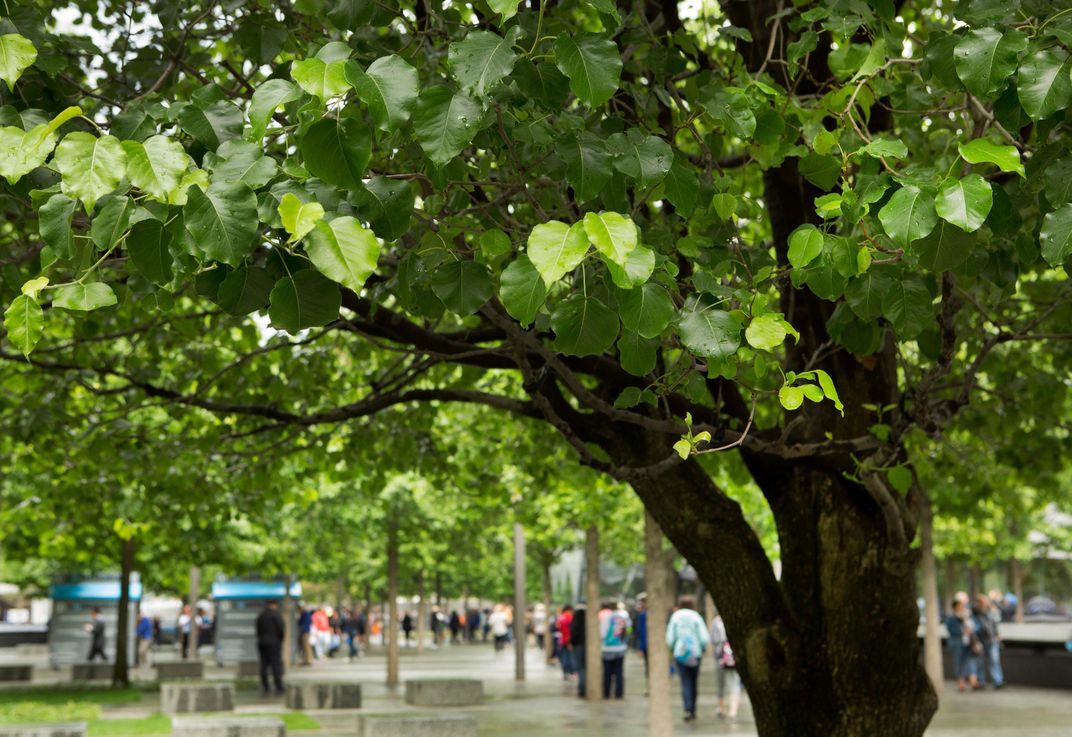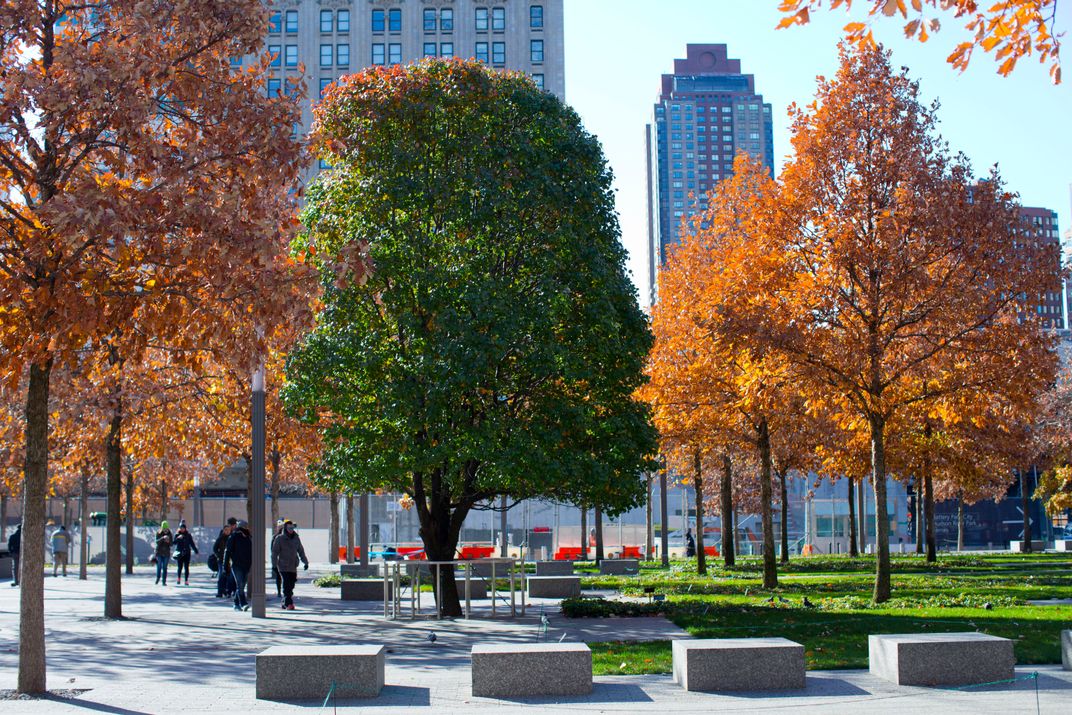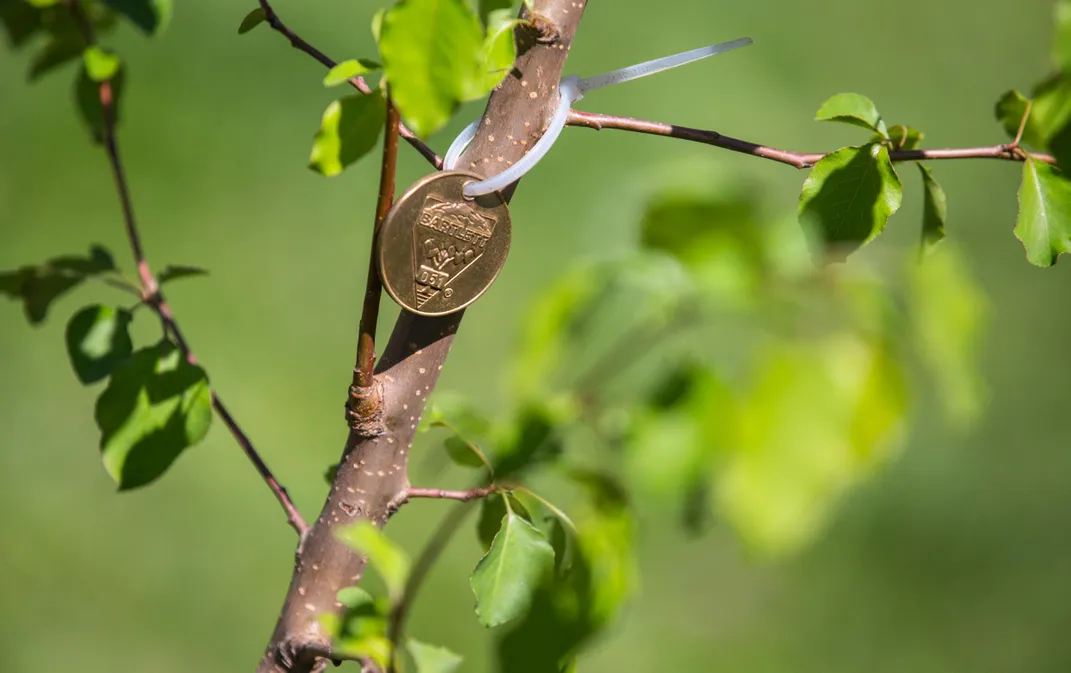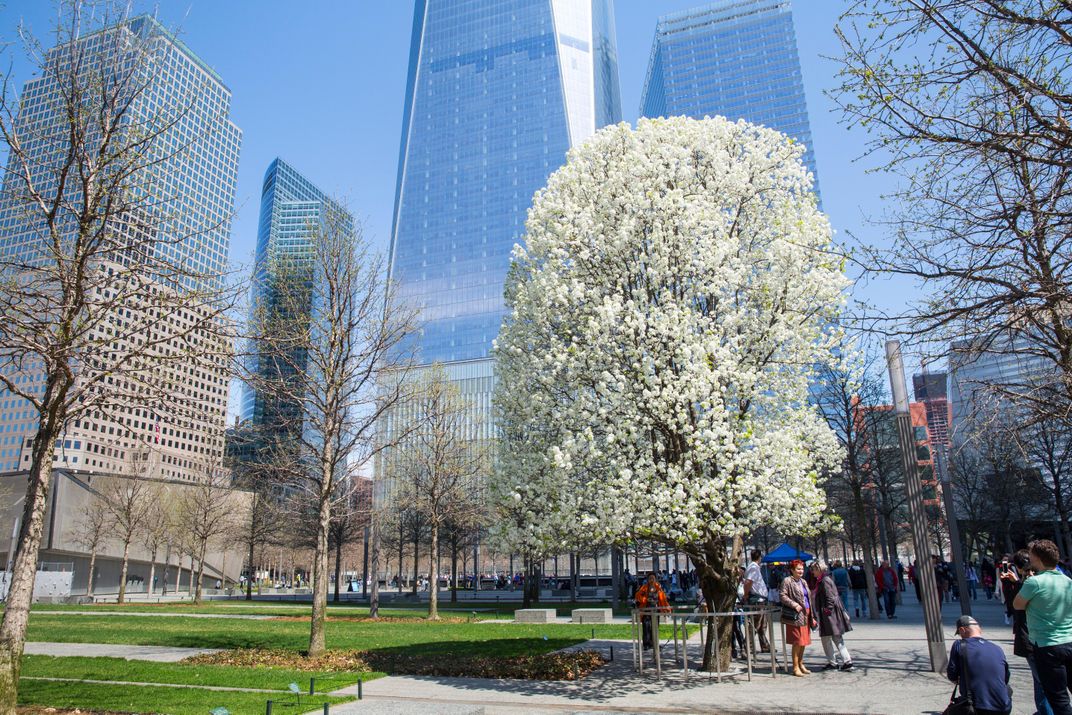Saplings From the 9/11 Survivor Tree Are Headed to Paris, San Bernardino and Orlando
The tree is a powerful symbol of resilience and life, even in the most tragic circumstances
When the dust started to settle at Ground Zero at the World Trade Center after the 9/11 bombings, something amazing emerged—a Callery pear tree that, though badly damaged, had survived the fires, collapsing buildings and chaos of the World Trade Center plaza. Now, reports the Agence France-Presse, the legacy of that tree will comfort others who have endured violent attacks when seedlings from the so-called Survivor Tree are planted around the world.
It’s the third time seedlings from the tree have been donated to areas that have been attacked, reports the AFP. This year’s sapling recipients are Paris, France, where at least 130 people were killed by gunmen on November 13, 2015; San Bernardino, California, where 14 people were shot at an office holiday party on December 2, 2015; and Orlando, Florida, where 49 people were gunned down at a gay nightclub on June 12.
The donations are part of the National September 11 Memorial & Museum's Survivor Tree Program, which was launched in 2013. Since then, seedlings have been donated to cities that have been through hurricanes, fires, bombings, mudslides and terror attacks.
As Olivia Just reports for the Stamford Advocate, caring for the seedlings is no small task. The tree has now produced over 400 saplings, writes Just, which are stored at a Queens high school and worked on by expert arborists.
The program bears a resemblance to one built around another symbolic tree: the horse chestnut tree that stood outside Anne Frank’s hiding place in Amsterdam. That 170-year-old plus tree eventually fell over in 2010 after suffering from a disease. Luckily, hundreds of saplings were created from the tree and it lives on as a testament to Anne Frank and the other victims of the Holocaust at sites all over the world.
As David W. Dunlap reports for The New York Times, the tree was first spotted among the rubble by Parks Department arborists just after the attack. Though it was not the only tree to survive, it was the only one that was salvaged. The tree was taken from the site as a mere stump and slowly went from charred husk to healthy tree with the help of years of restoration work.
After the tree’s dramatic rescue in 2001, it was cared for by the New York City Department of Parks and Recreation, who nursed it back to health over the course of nine years as new branches spouted from its once charred stump and snapped roots. In 2015, it was placed in the plaza of the new 9/11 memorial along with a forest of trees specially selected by work crews from as far away as Pennsylvania and Maryland, where the other tragic events of September 11 played out.
“The trees will never be identical, growing at different heights and changing leaves at different times,” writes the National September 11 Memorial & Museum, “a physical reminder that they are living individuals.” A simple tree could never bring back the nearly 3,000 people who died in the attacks or the tragic events its seedlings commemorate. But the long-lasting living memorials will help others mourn—and memorialize—all that was lost during those fateful events.
/https://tf-cmsv2-smithsonianmag-media.s3.amazonaws.com/accounts/headshot/erin.png)




/https://tf-cmsv2-smithsonianmag-media.s3.amazonaws.com/accounts/headshot/erin.png)